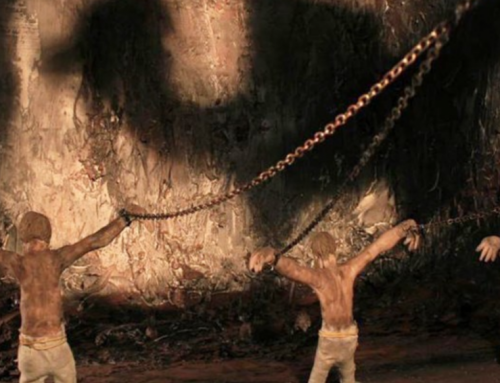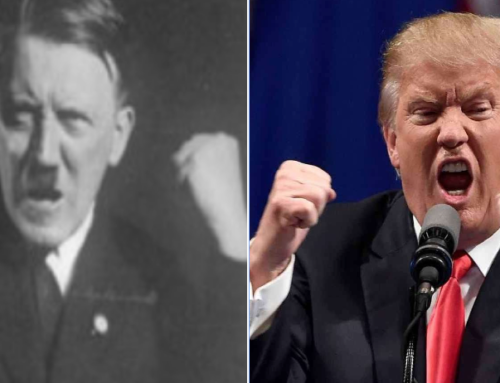Synopsis
Are US voters caught in a culture of anxiety disorder and not able to engage their prefrontal cortex when considering which presidential candidate to vote for? Certainly one candidate appeals to the “thinking brain” and the other the “reptilian brain.” And if neuroscience and Dr. Clotaire Rapaille are right, and “the reptilian brain always wins,” then America is in for a fear-induced, high-wire ride for the next four years.
(4 minute read)
The amygdala is part of what is sometimes referred to as the “fear center” in human the brain and associated with the “reptilian brain” (not completely accurate for neuroscientists but close enough for this purpose).
The amygdala, otherwise known as the brain’s “fear center” … is invariably described as a small, almond-shaped cluster of neurons buried deep within the brain’s limbic system. There are two of them, one on each side of the brain, and the dominant view is that their primary purpose is to govern the emotion of fear. That means both that we need these clusters of neurons in order to feel afraid, and conversely, that activity in the amygdala is a sure sign that we are scared or threatened.
[1]
Paul J. Whalen, neuroscientist at the Department of Psychological and Brain Sciences, Dartmouth College says, “The amygdala produces an alarm reaction and the prefrontal cortex is in charge of cancelling or corroborating the alarm.” He adds, “The amygdala sends the initial signal that tells the other parts of the brain to be better at what they do.” The connection between the amygdala and the rest of the thinking brain is tenuous in many humans. Whalen explains that the amygdala is “never off … it can automatically react to something you don’t necessarily ‘see’ …” and some people don’t use the prefrontal cortex as well as they can and that can have severe consequences.”[2]
People with anxiety disorders don’t recruit the prefrontal cortex as well as they should … We know there are problems with this system [the connections between the amygdala and the prefrontal cortex] in kids raised in neglectful situations. Those kids search for threats too often. We know hypervigilance is a key symptom of anxiety. The problem with anxiety disorders isn’t hyper fear. It’s hypervigilance.[3]
The prefrontal cortex region in the brain is considered where a great deal of cognitive planning and decision-making takes place and where social behavior is moderated.[4] The basic activity in this region is where thoughts and actions are organized around internal goals.[5]
We know the flight or fight signal is natural and protective. But what happens when people’s connection between the amygdala and the prefrontal cortex doesn’t work as it should? When the fear signal and the hypervigilance anxiety stops short of the prefrontal cortex. That can be a problem. If we do not think about and filter the warnings the amygdala is sending then we are not, as Whalen says, “in charge of cancelling or corroborating the alarm.” Consequently, we could be acting out of unwarranted fear, apprehension and anxiety, not cognitive reasoning.
Trumped up fears?
(photo: takingnote.blogs.nytimes)
Are the majority of Donald Trump’s supporters acting on trumped up fears buried in their amygdala and allowing anxiety disorder to block the engagement of their prefrontal cortex?
Every culture has an unconscious. – Dr. Clotaire Rapaille
I have referred to Dr. Clotaire Rapaille in a previous blog and again I cite his findings. He is the founder and CEO of Archetype Discoveries Worldwide and the author of the New York Times bestseller, The Culture Code (and 13 other books). Rapaille analyzes the behavior of people and cultures based on biology, cultural anthropology, social psychology, psychoanalysis, psychiatry and cultural environments. He is an international expert on the age-old question: Why do people do what they do? And that question has never been more relevant than during this moment in American politics.[6]
Since 1976, Rapaille has addressed human behavior, analyzing the roles of what he categorizes as our “three brains: cortex, limbic and reptilian” – the reptilian and amygdala are similar and functionally aligned in many ways. In the question of “the struggle between intelligence and emotion,” Dr. Rapaille states: “In a battle between logic, emotion and instinct, the reptilian brain always wins. This is true when one is dealing with personal welfare, human relationships, purchasing decisions, and … the choice of leaders.”[7]
So? Is the popularity phenomenon experienced by Donald Trump based more on the amygdala and reptilian part of the brain rather than the prefrontal cortex? Donald may not understand the cognitive considerations here, in fact, he probably can’t spell amygdala let alone define it (I had to express my reptilian bias). But he sure as hell knows how to activate the “fear center:” Build a wall; ban Muslims; say Mexican immigrants are murders and rapists; claim Muslims celebrated in New Jersey when the World Trade Center collapsed; ask Russians to hack American files; and continually spew falsehoods like immigration is at an all-time high, US taxes are the highest in the world and unemployment could reach 42%. According to Dana Milbank of the Washington Post, “In March, Politico analyzed a week’s worth of Trump’s words and found that he averaged one misstatement every five minutes.”
Is it possible that the almost 14 million people who voted for Trump in the primaries are all stuck between their amygdala and prefrontal cortex? Okay, probably not all of them. Certainly not the politicians (i.e., Chris Christie, Jeff Sessions, Paul Ryan, Mitch McConnell, et al), who are thinking like consequentialists do, calculating political consequences without having even a modicum of deontology. Because duty, morality and doing the right thing has been absent from the democratic process since maybe … the nation-states of ancient Greece.
If the neuroscience and Dr. Rapaille are right and “the reptilian brain always wins,” then it’s imperative that the number of prefrontal cortex voting in November exceeds the number of amygdalae voting. If not, America could end up with President Trump and a national contagion of anxiety disorder and hypervigilance.
Footnotes:
- [1] http://www.psychologicalscience.org/index.php/news/full-frontal-psychology/fleeing-the-brains-fear-center.html
- [2]Who’s afraid of the amygdala? Research blows away “fear center” myth, Aug. 12, 2013, http://boingboing.net/2013/08/12/whos-afraid-of-the-amygdala.html
- [3] Ibid
- [4]“Prefrontal structural and functional brain imaging findings in antisocial, violent, and psychopathic individuals: a meta-analysis”. Yang Y, Raine A (November 2009). Psychiatry Research. 174 (2): 81–8. doi:10.1016/j.pscychresns.2009.03.012. PMC 2784035. PMID 19833485.
- [5]“The prefrontal cortex: categories, concepts and cognition”. Miller EK, Freedman DJ, Wallis JD (August 2002). Philosophical Transactions of the Royal Society of London. Series B, Biological Sciences. 357 (1424): 1123–36. doi:10.1098/rstb.2002.1099. PMC 1693009. PMID 12217179.
- [6] http://www.archetypediscoveries.com/
- [7] The Culture Code, Clotaire Rapaille, p. 74, Crown Publishing, NY, 2006








Leave A Comment